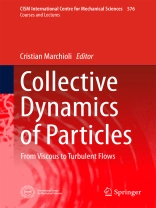The book surveys the state-of-the-art methods that are currently available to model and simulate the presence of rigid particles in a fluid flow. For particles that are very small relative to the characteristic flow scales and move without interaction with other particles, effective equations of motion for particle tracking are formulated and applied (e.g. in gas-solid flows). For larger particles, for particles in liquid-solid flows and for particles that interact with each other or possibly modify the overall flow detailed model are presented. Special attention is given to the description of the approximate force coupling method (FCM) as a more general treatment for small particles, and derivations in the context of low Reynolds numbers for the particle motion as well as application at finite Reynolds numbers are provided. Other topics discussed in the book are the relation to higher resolution immersed boundary methods, possible extensions to non-spherical particles and examples ofapplications of such methods to dispersed multiphase flows.
Inhoudsopgave
Low-Reynolds number particles in highly viscous fluid.- Collective Stokesian dynamics of viscous suspensions.- Transition in solid-fluid systems.- Modeling and simulation of discrete particles in fluid flow.- Collective effects of inertial particles in turbulent flows.- Modeling and simulation of finite-size particles in turbulence.












